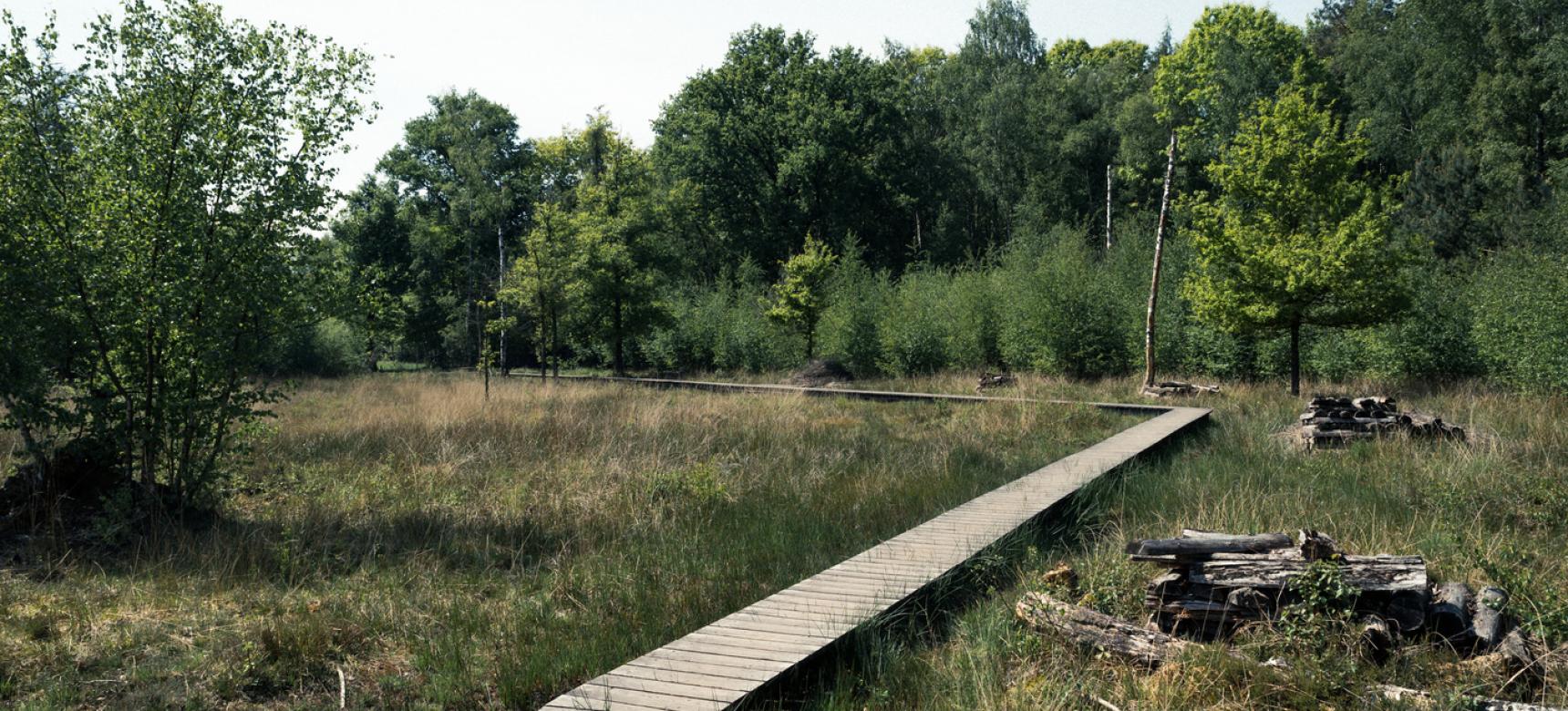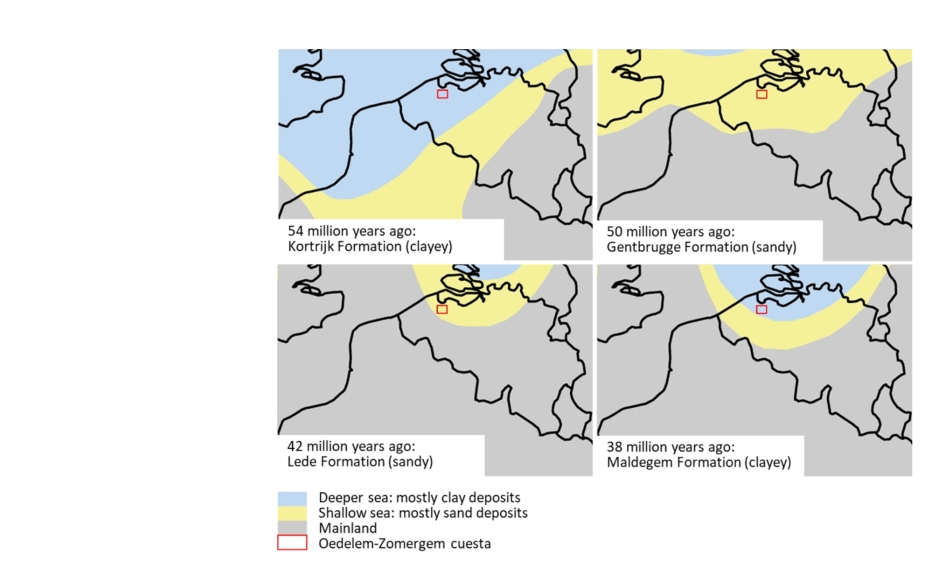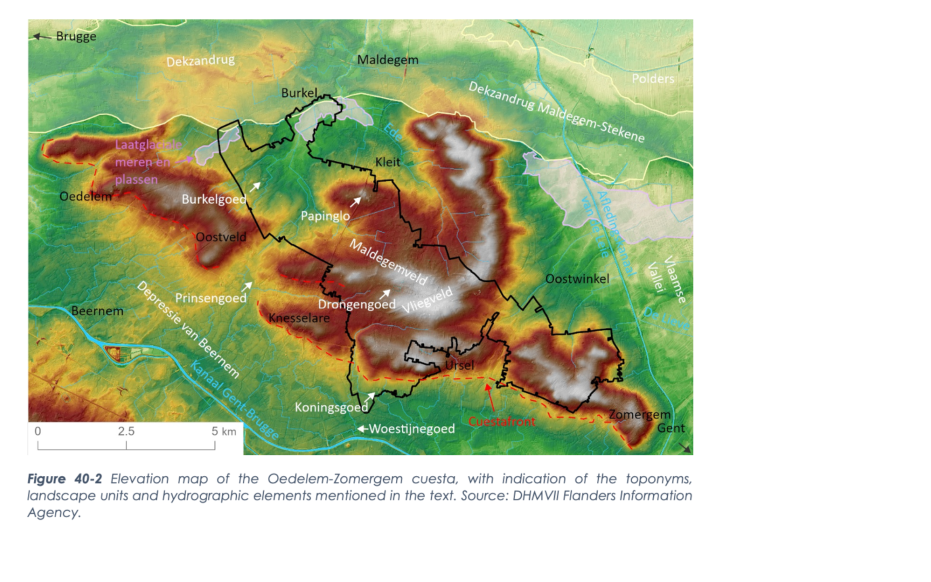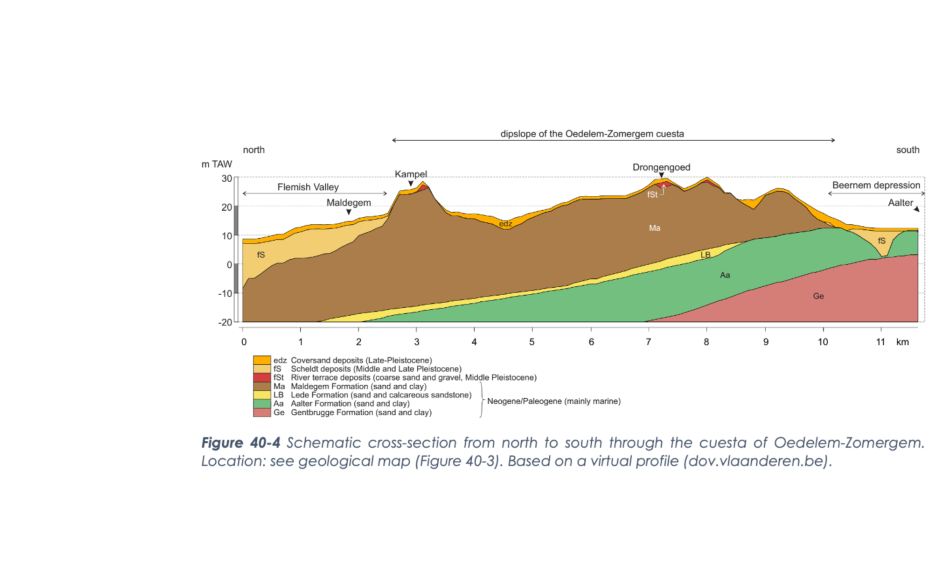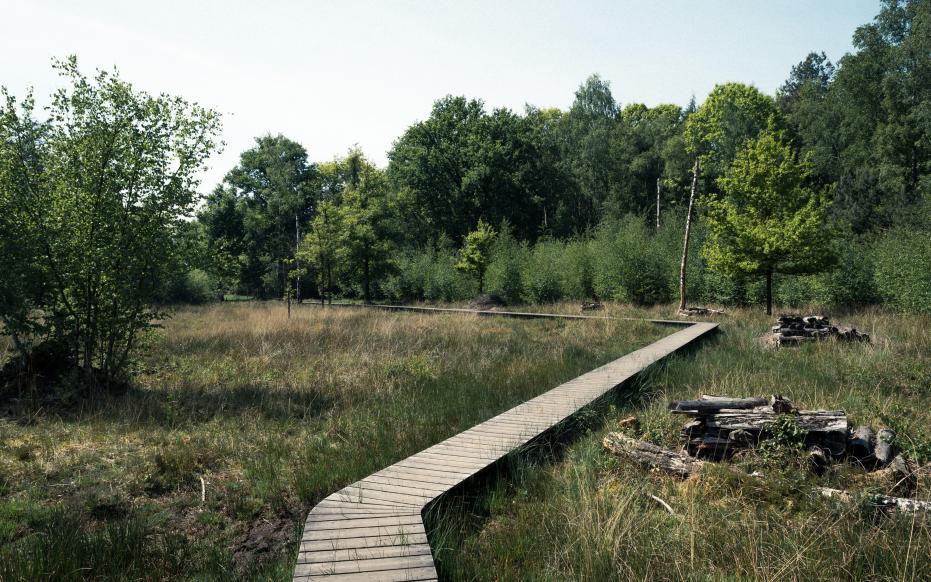Formation of a cuesta
A cuesta is an asymmetrical ridge and occurs when geologic layers become sloping and then, due to their different composition, do not erode at the same rate. The sloping layer that erodes at a slower rate remains partly as an elevation in the landscape. Where this softer layer is eroded, a steep slope forms perpendicular to the hard layer: the cuesta front. Parallel to the sloping, erosion-resistant layer, a softer slope forms: the cuesta ridge.

